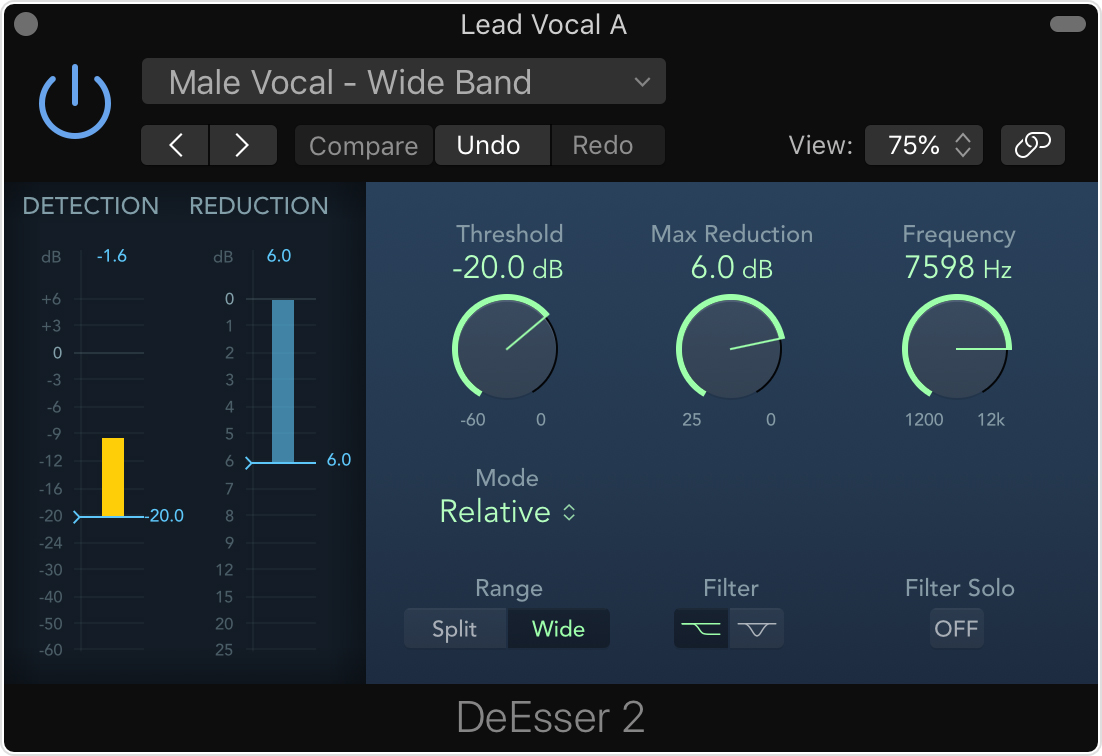Reduce sibilance in Logic Pro for Mac
Use DeEsser 2 to reduce the sibilance of a vocal track in your project.
A vocal track can sometimes have unpleasant sibilance (high frequency s sounds) caused by the interaction between a performer’s voice and the microphone used for recording, settings on a compressor inserted on the track, or just the performer’s voice itself.
To reduce sibilance, you can use DeEsser 2. DeEsser 2 is a special type of dynamics processor that reduces a narrow range of high frequencies, which can help reduce sibilance without affecting the entire vocal track.
Add DeEsser 2 to a channel strip
Click an Audio Effect slot in a channel strip, then choose Dynamics > DeEsser 2. To help locate the frequencies you want to reduce, add Channel EQ to the channel and use its built-in analyzer. Add it before DeEsser 2 in the signal path.
You can also apply DeEsser 2 to audio regions using selection-based processing.
Adjust DeEsser 2
To quickly get started, choose a preset. Click Factory Default in the plug-in window, then choose a preset such as "Male Vocal - Wide Band."

Play your Logic Pro project. To identify the high-frequency peaks you want to reduce, open the Channel EQ window and watch the analyzer as the project plays. In general, sibilance in female voices occurs between 5–8 kHz and in male voices between 3–6 kHz.
Set the frequencies you want to reduce with the Frequency knob. Then adjust the Threshold knob to set the level at which DeEsser 2 starts to reduce those frequencies. To set a narrow frequency range, click Split. For a wider frequency range, click Wide.
You can also choose the type of filter the selected frequency uses. To reduce a broad range of high-end frequencies, click the . To filter specific frequencies in a small range, click the .
To set how much sibilance is reduced, adjust the Max Reduction knob. The Reduction meter shows how much sibilance DeEsser 2 is reducing.
Change the mode
DeEsser 2 has two mode settings, which determine how the plug-in reacts to the incoming audio signal. For lower-level signals and a more responsive type of gain reduction, click the Mode pop-up menu and choose Relative.
For higher-level signals and more classic de-essing, choose Absolute.
Need more help?
Tell us more about what's happening, and we’ll suggest what you can do next.
